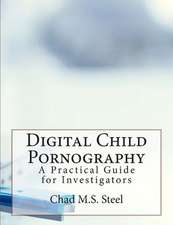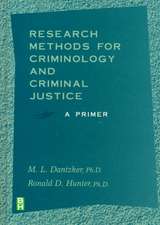Bioarchaeology of Marginalized People
Editat de Madeleine L. Mant, Alyson Jaagumägi Hollanden Limba Engleză Paperback – 18 feb 2019
This volume queries the diverse meanings of marginalization, from physical or social peripheralization, to identity loss within a majority population, to a collective forgetting that excludes specific groups. Contributors to the volume highlight the histories of individuals who did not record their own stories, including two disparate Ancient Egyptian women and individuals from a high-status Indigenous cemetery in British Columbia. Additional chapters examine the marginalized individuals whose bodies comprise the Robert J. Terry anatomical collection and investigate inequalities in health status in individuals from Canada, the United States, and the United Kingdom. Modern clinical population health research is examined through a historical lens, bringing a new perspective to the critical public health interventions occurring today. Together, these papers highlight the role that biological anthropologists play both in contributing to and challenging the marginalization of past populations.
- Highlights the histories and stories of individuals whose voices were silenced, such as workhouse inmates, migrants, those of low socioeconomic status, the chronically ill, and those living in communities without a written language
- Provides a holistic and more complete understanding of the lived experiences of the past, as well as changes in populations through time
- Offers an interdisciplinary discussion with contributions from a wide variety of international authors
Preț: 468.55 lei
Preț vechi: 605.43 lei
-23% Nou
Puncte Express: 703
Preț estimativ în valută:
89.67€ • 97.37$ • 75.32£
89.67€ • 97.37$ • 75.32£
Carte tipărită la comandă
Livrare economică 16-30 aprilie
Preluare comenzi: 021 569.72.76
Specificații
ISBN-13: 9780128152249
ISBN-10: 0128152249
Pagini: 300
Dimensiuni: 152 x 229 x 20 mm
Greutate: 0.4 kg
Editura: ELSEVIER SCIENCE
ISBN-10: 0128152249
Pagini: 300
Dimensiuni: 152 x 229 x 20 mm
Greutate: 0.4 kg
Editura: ELSEVIER SCIENCE
Public țintă
Primary: Biological Anthropologists, Palaeopathologists, Historical Archaeologists, Palaeoepidemiologists, Historians, Museum Curators and Social Epidemiologists.Secondary: Graduate Level and Upper-Leve Undergraduate Level students in Bioarcheology and Archaeology.
Cuprins
1. Introduction
2. Mummies, memories and marginalization: the changing social roles of a mummy from ancient to modern times
3. Task Activity and Tooth Wear in a Woman of Ancient Egypt
4. Looking into the Eyes of the Ancient Chiefs of Shíshálh: The osteology and facial reconstructions of a 4000-year-old high status family
5. "Officially absent but actually present": bioarchaeological evidence for population diversity in London during the Black Death, AD 1348-50
6. Marginalized by Choice – Kayenta Pueblo Communities in the Southwest (AD 800-1500)
7. Marginalized Bodies and the Construction of American Anatomical Collections
8. Health inequity and spatial divides: infant mortality during Hamilton, Ontario’s industrial transition, 1880-1912
9. In the Shadow of War: The Forgotten 1916 Polio Epidemic in New Zealand
10. Exploring the Effects of Structural Inequality in an Individual from Nineteenth-Century Chicago
11. Down and out in Post Medieval London: Changes in Welfare Ideology and the Impact on the Health of Workhouse Inmates
12. Innovation in population health intervention research: a historical perspective
13. Mapping Marginalized Pasts
2. Mummies, memories and marginalization: the changing social roles of a mummy from ancient to modern times
3. Task Activity and Tooth Wear in a Woman of Ancient Egypt
4. Looking into the Eyes of the Ancient Chiefs of Shíshálh: The osteology and facial reconstructions of a 4000-year-old high status family
5. "Officially absent but actually present": bioarchaeological evidence for population diversity in London during the Black Death, AD 1348-50
6. Marginalized by Choice – Kayenta Pueblo Communities in the Southwest (AD 800-1500)
7. Marginalized Bodies and the Construction of American Anatomical Collections
8. Health inequity and spatial divides: infant mortality during Hamilton, Ontario’s industrial transition, 1880-1912
9. In the Shadow of War: The Forgotten 1916 Polio Epidemic in New Zealand
10. Exploring the Effects of Structural Inequality in an Individual from Nineteenth-Century Chicago
11. Down and out in Post Medieval London: Changes in Welfare Ideology and the Impact on the Health of Workhouse Inmates
12. Innovation in population health intervention research: a historical perspective
13. Mapping Marginalized Pasts
























